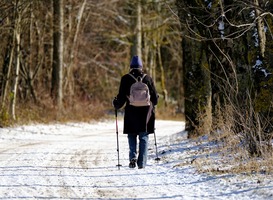In Parkinson’s disease, dopamine-producing cells in the brain die. As a result, patients experience various complaints, ranging from slower movement to trembling of an arm or leg. A 2018 study showed that patients who exercised vigorously on a stationary bike three times a week had symptoms stabilized compared to a control group who only performed stretching exercises. MRI scans were also made of both groups of participants, the results of which have now been published in Annals of Neurology.
Stronger connections between brain areas
Many people with Parkinson’s have difficulty with automatic movements such as walking. This is because the part of the brain that controls these routine movements is affected. The researchers saw on the scans that in physically active patients the connections were strengthened between brain regions that were relatively spared by Parkinson’s. “These areas of the brain are, as it were, given a stronger role in the network of the brain. We see this as a compensation strategy of the brain: it compensates for the fact that automatic movements, such as walking, become more difficult,” said Rick Helmich, neurologist and lead researcher.
The amount of gray matter in the brain stabilizes
The researchers also looked at the gray matter of the brain, where the cell bodies of nerve cells are located. This clearly showed that the amount of gray matter stabilized in the patients who had been active on the exercise bike for six months. This substance did decrease in the group that did stretching exercises. Helmich: “These findings are in line with previous studies, which show that people who actively train for something develop more connections between brain cells. With sports, therefore, not only your muscles increase, but also your brain.”
be able to think better
Finally, the patients who were physically active also became better at thinking. Martin Johansson, PhD student and lead author of the publication, explains how they were able to determine this: “We asked participants to perform various cognitive tasks, where eye movements allowed us to measure how well patients were able to control automatic movements. The physically active group turned out to do this better than the control group: they improved their own performance six months earlier, prior to training on the exercise bike. Then, on the MRI scans, we saw that how good they were at this was directly related to their fitness, as measured by their lung capacity. This showed: the fitter, the greater the thinking ability.”
Exercise is good for the brain
The researchers suspect that intensive exercise improves brain function by stimulating the compensatory capacity, not because Parkinson’s disease progresses more slowly. Rick Helmich: “We know that exercise is good for the brain. For everyone, but certainly also for people with Parkinson’s. These results have important implications: exercise causes changes in the brain that can reduce Parkinson’s symptoms. I hope that people with Parkinson’s will take this as an enormous motivation to exercise more. In this time of lockdown, it also underlines the importance of sports and exercise.”
By: National Care Guide
–


